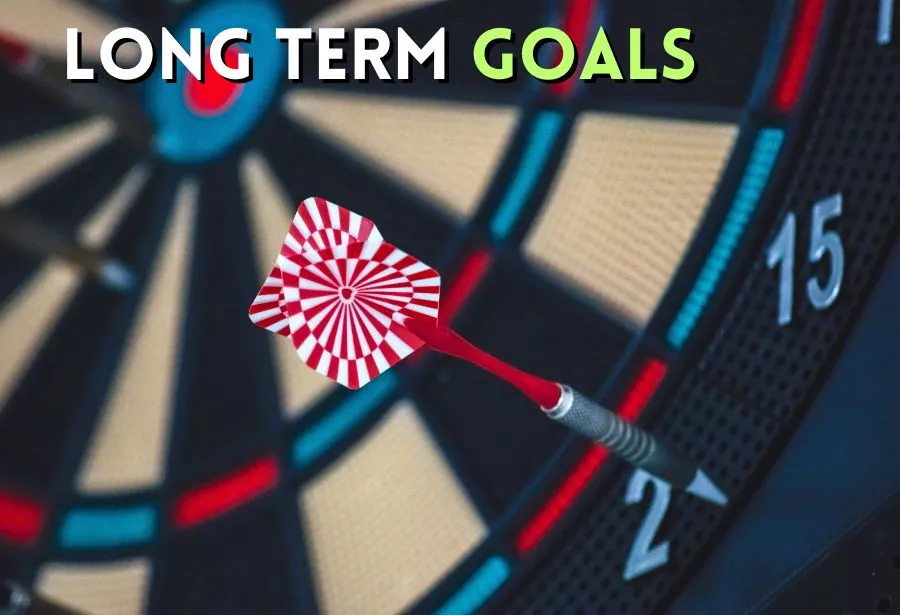Saving money for short- and medium-economic objectives is relatively easy if you think about it. All you need to do is consistently save money until you can achieve your objective. To determine how much you can save when you receive the money preserved and whether the goal is attainable, you may even make your goal SMART.
Long-term financial objectives, however, differ slightly. You are attempting to save many thousands, if not hundreds of thousands, of money. Long-term financial objectives include, for instance:
- House down payment.
- Paying for my kids’ college education.
- Retirement planning.
“Finding the Optimal Path to Attain Long-Term Financial Goals”
Making Your Goals a Priority:
Long-term financial goal-setting necessitates a different mentality than short-term goal-setting. A healthy balance between short-term and long-term goals is required to strategize for the future. Think about it:
How significant is this objective to my entire financial health?
Is it Relative to my short-term aims? How significant is this goal?
What objectives are most significant to me right now?
For instance, you should make retirement savings a major long-term objective. This will likely be more important than the majority of your short-term objectives in most cases. However, you should briefly use the funds you’ve been saving for retirement to achieve the short-term aim of dealing with an emergency if you discover yourself in an economic bind, such as a serious illness or urgent house repair.
Crafting SMART Long-Term Goals:
Any monetary objective can gain from being made into a SMART goal, but setting realistic long-term targets is practically necessary. If you want to consider a goal SMART, ensure that it is:
- What is your precise objective?
- What amount of cash will you save for each goal?
- Achievable – How much money do you save each month?
- Realistic: Is it possible to achieve this goal?
- Timed – When will I finish this objective?
You are setting concrete objectives for yourself when you create SMART goals. Additionally, if followed, you’re creating a framework that will guarantee you achieve your goal. In relation to that…
Streamline Saving for Your Long-Term Goals:
Although this is particularly true for long-term goals, the only way to achieve any financial objective is to save consistently. However, attempting to save money manually increases the likelihood that you will either remember to put it away or, worse yet, be tempted to spend it. Automating the savings process is the greatest method to guarantee consistent savings.
Automated saving strategies are incorporated into some long-term objectives, such as the option to contribute to your 401(k) plan. On certain occasions, it may be necessary to handle your savings personally. For example, you can set up a direct deposit to allocate a percentage of your earnings into a designated savings account. If you cannot do as well, you can still set a reminder to save money each payday.
Grow Your Savings through Strategic Investments:
The majority of long-term financial objectives take five years to accomplish. The money you save can now be invested because of this.
To put your money towards your long-term objectives, you can do a number of things, including:
- Accounting for money markets
- CD – Certificate of Deposit
- A mutual fund
- Individual Retirement Accounts (IRAs)
Each has unique benefits and drawbacks, so you should consider which accounts are appropriate for your particular circumstances. Those who want to keep it safe may want to open a multi-year CD, while others at ease with risk may wish to invest in the stock market.
Consistently Evaluate Your Long-Term Goals:
Last but not least, schedule a moment each year to assess your long-term objectives. Take a moment to assess your progress thus far. This will demonstrate the success of your savings strategy and serve as a powerful motivator for sound money management.
Examine your savings strategy next. Verify your progress towards your financial objective. If you get a rise or windfall, you should invest more money toward this objective.
Above all else, though, be sure your financial objective is still pertinent. Your life may occasionally alter, causing you to desire to modify or abandon your aim. It can result from something other than unfortunate occurrences; for instance, if your kid is starting college, you might not need to contribute as much to their fund.
Achieve Your Long-Term Financial Goals
You should take specific actions to ensure that you achieve your long-term financial goals if you are saving for them. It would help if you considered how to invest your resources to benefit from high-interest rates and interest compounding, systematize savings for your long-term goals, and prioritize the goal you have in mind over your short-term ambitions. Additionally, it would help if you routinely examined your goals to gauge your success and see whether you might boost the amount of money you’re allocating to them.
“If you have built castles in the air, your work need not be lost; that is where they should be. Now put the foundations under them,” said Henry David Thoreau. Good Luck & Good Bye!






